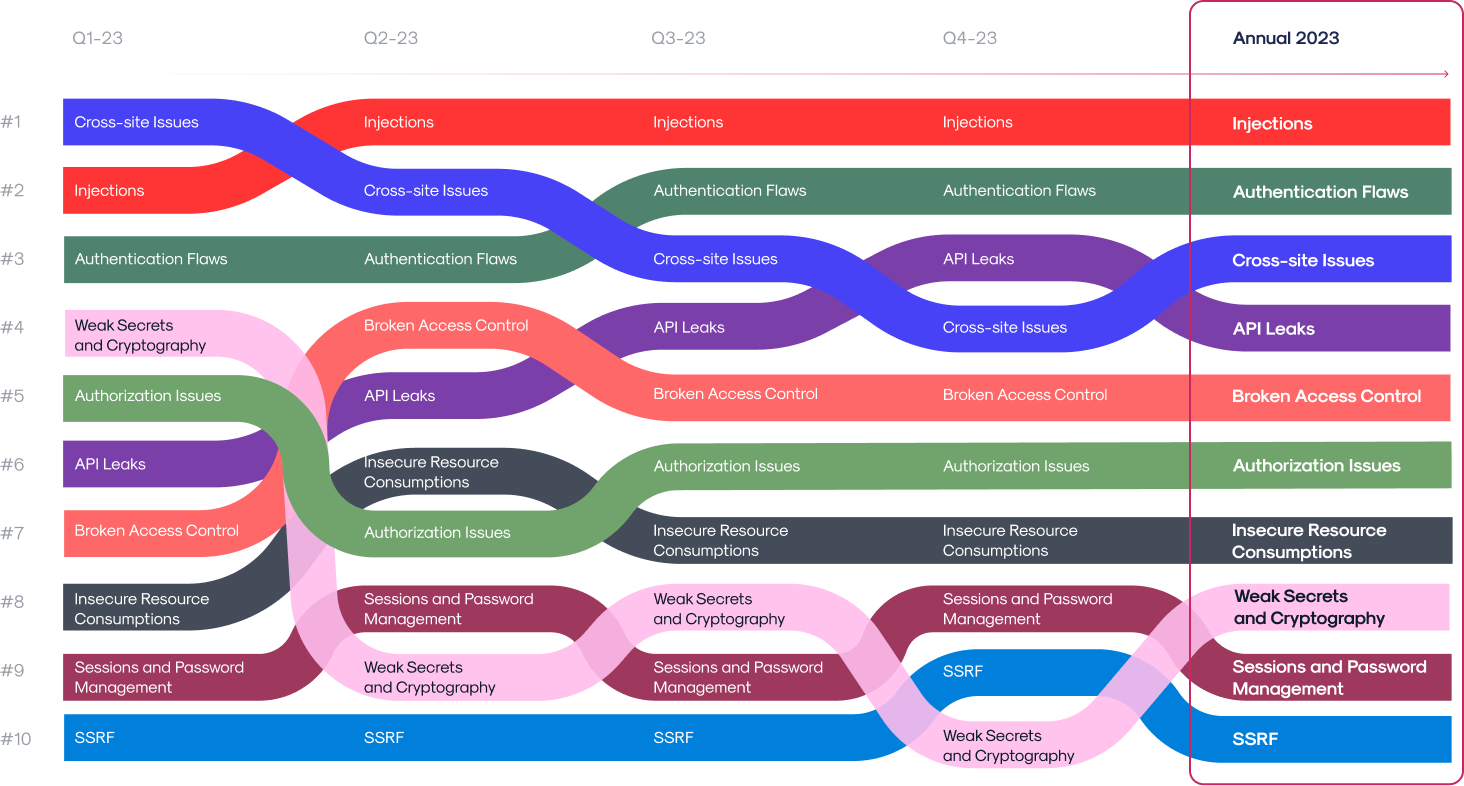Since 1991, Web Application Firewall, commonly referred to as WAF, has become one of the most common application security technologies available on the market. Since the last century, WAFs have evolved by incorporating the cloud and using Machine Learning instead of RegExp. Currently, few technologies, such as NG-WAF, RASP, WAAP, and a few others, have internal WAF capabilities, which prevent web applications and API threats. Majority of the fintech, health tech, and e-commerce companies have…
The Wallarm Security Research team is pleased to share the latest version of our API ThreatStats report. This report serves as a key resource for API, Application security practitioners. It emphasizes the need for a proactive stance in API security, advocating for continuous monitoring, regular updates, and the adoption of latest advanced security solutions.
API Security Threats Continue to Grow
In today’s modern Enterprises, Application Programming Interfaces (APIs) have become the cornerstone of technological integration and innovation. As the reliance on APIs intensifies, so does the complexity and frequency of security threats against them. Our 2024 Annual API ThreatStats™ Report reveals an alarming trend in API vulnerabilities with a substantial 30.15% rise in API-related Common Vulnerabilities and Exposures (CVEs), underscoring the escalating challenge facing today’s security practitioners.

Detailed Analysis of API Vulnerabilities
The report includes a detailed breakdown of the increased API vulnerabilities and categorizes these vulnerabilities into several types, including injection flaws, broken authentication, and sensitive data exposure, among others.
For example, injection flaws alone have seen a 40% increase in frequency, illustrating a growing area of concern. The technical nuances of each vulnerability type are discussed, along with real-world breach instances that exemplify their impact.

Reliance on proven frameworks such as OWASP Top 10 is a good starting point, however security practitioners need to adapt to a more dynamic Top 10 list (shown above).
In-Depth Look at API Leaks
Often overlooked, API leaks have become a critical issue, often resulting from gaps in security protocols or oversight in API management. The report details several high-profile API leaks, analyzing the root causes and subsequent data breaches. These examples highlight the need for enhanced security measures, including regular audits and robust API testing strategies. The section also discusses techniques for early detection of potential leaks, emphasizing the importance of proactive security practices.
API Security Dominated Bug Bounty Payout
In 2023, the bug bounty landscape shifted significantly, with rewards for API vulnerabilities surpassing those for traditional web flaws. The report shows increased frequency and higher payouts for API issues, notably in Broken Access Control, Vulnerable/Outdated Components, and Injection vulnerabilities. API issues garnered 1.5 times more rewards than classic web vulnerabilities, and the average payout for API vulnerabilities was 65% higher, emphasizing the growing focus on API security.

Significant API Exploits in 2023
2023 witnessed some landmark API exploits, with the report offering an in-depth analysis of incidents like the Snapchat payout and the Citrix Bleed. These case studies delve into the technical specifics of each exploit, discussing how they were executed and the broader implications for API security. The analysis also explores potential preventative measures and response strategies, providing valuable lessons for security professionals.
Based on Data Analysis
The 2024 API ThreatStats™ Report encapsulates a year’s progress in understanding and combating API security threats. It builds upon the foundations laid by the quarterly reports of 2023, offers a comprehensive view of the evolving cybersecurity challenges and the strides made in API security. It is based on analyzing real traffic and tracking common CVEs and bug bounty payouts.
Predictions for 2024 and Beyond
Looking ahead, the report predicts a continued escalation in API security challenges. It anticipates an increase in automated attacks and the potential use of AI by cybercriminals. This section discusses the implications of these emerging trends, advising security professionals on the need to adapt and stay ahead of the curve in their defensive strategies.
In today’s complex digital landscape, the security of APIs has become paramount. As we move into 2024, it’s essential to stay ahead of the evolving API security threats and vulnerabilities. The upcoming webinar on “API ThreatStats™ Report: 2023 Year-In-Review” is your quickest way to learn about the latest trends and insights in API security. The report was created by the Wallarm Research team based on the analysis of: – Over 1.2 billion attacks in the…
Yet another RCE with a CVSS score of 9.8 out of 10 was disclosed a few hours ago. This issue looks like the same Log4shell and it seems even more dangerous since Common Texts are used more broadly. The Apache Foundation published a vulnerability in the Apache Commons Text project code and published a message to this effect in the project’s mailing list on October 13th, an official date of birth of Text4Shell vulnerability. This…
Article by Jiju Jacob, Director of Engineering at Revenera [This is an update of Mr. Jacobs’ 05/23 post in his Medium blog. He is a Director of Engineering at Revenera. Revenera, born as InstallShield and now a Flexera company, helps software and technology companies use open source solutions more effectively, and provides software development, consulting, training and revenue recovery services. We are grateful to Jiju for updating his post for our blog and sharing it…
In our modern world, web applications are becoming ever more important. Bad actors know this and they target them more frequently than ever before. This is not likely to stop any time soon as the number of web applications the world needs will only go up with its reliance on technology. To fully prevent an attack is impossible but we need to try our hardest to do so and in our daily struggles in this…





